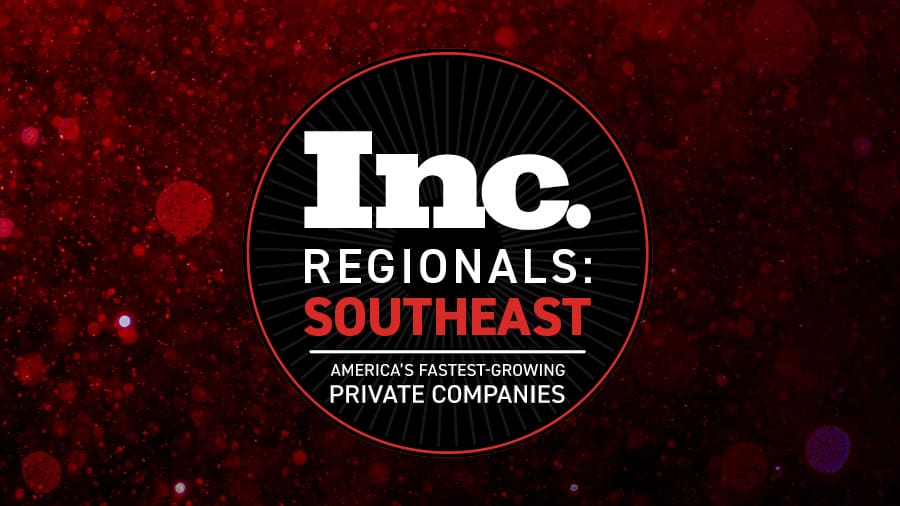
How to Manage Stress Before It Manages You
“The word that people use to describe how they felt most of the time, personally and professionally, was ‘done.’ They’re like, ‘Robyn, I feel done.'” – Dr. Robyne Hanley-Dafoe
Sound familiar?
Or, perhaps more importantly, do those words “feel” familiar?
It’s never been more challenging to be the CEO of a BIG business. The stakes are high. The time crunch is around the clock. And potential threats to your growth plans are coming at you from every angle.
Stress is an unavoidable consequence of all these demands on the CEO. The good news is that if you’re on the lookout for red flags about your mental and physical health, you can get out ahead of stress and learn how to prevent it from harming you, your relationships, and your business.
At the 2024 Making BIG Happen Summit, Dr. Robyne Hanley-Dafoe delivered a masterclass on stress management for CEOs. Organize your own CEO self-care routine around these five key ideas:
1. Identify when positive stress becomes negative stress.
Again there’s no avoiding stress, especially for leaders in high-pressure jobs. In fact, stress isn’t necessarily bad.
Looming deadlines and tough decisions can bring out the best in a leader and spark creative thinking, energy, focus, and bold action. “When you have enough demand, responsibility, and accountability where things actually matter, your body’s going to produce cortisol to give you the energy to be on your A-game,” said Dr. Hanley-Dafoe.
But according to The Yerkes-Dodson Law, there’s a point where our rising “arousal level” starts dragging down our “performance level.” CEOs need to find their sweet spot on that X-Y axis and try to stay “in the zone” of peak interest and productivity without tipping over into unmanageable stress.
Self-awareness and humility are a BIG part of that equation. Most CEOs love that feeling of firing on all cylinders and charging through their daily to-do lists. But if you’re chasing that feeling through gritted teeth, gasps of breath, and a pounding in your temples, you need to admit that you’re sliding down the wrong side of the stress curve.
2. Take your stress — and your health — seriously.
The scientific research is robust, and it’s unambiguous: stress kills. And executives are at a particularly high risk for dangerous conditions like exhaustion, high blood pressure, and heart disease.
“Burnout is the curse of the strong,” said Dr. Hanley-Dafoe, and too many CEOs still think they have to be the strongest person in the room at all times. For decades, it seemed like high-profile CEOs were one-upping each other in the press with boasts about how little they slept, how early they were at the office, and how many productivity hacks they’d discovered to cram two days of work into one.
Today, it’s far more likely that you know a CEO who tried to push themselves too hard, too fast, for too long, and slammed right into a wall.
We heard from one such CEO at this year’s Make BIG Happen Summit. Peter Fioretti told attendees that he “felt like Superman” after building his latest successful company to $5 billion in sales. But after taking a victory lap that included a trip to the North Pole, Peter received some shocking medical results: a severe blockage in his carotid artery. As he recovered from surgery, Peter refocused his priorities around his health, his family, and a BIG vision for a more balanced, more purposeful, and less stressful life.
3. Integrate high-performance stress solutions into your routine.
CEOs who are skirting with burnout often feel like they just need a little more energy to accelerate through the challenge at hand. But instead of taking a moment to recharge, they keep their foot planted on the accelerator, trying to ignite that one last drop of gas in their empty tanks.
No matter who you are or what business you’re in, stress management for CEOs always starts with the same first step: remember who’s boss. Your business needs you to be operating in that peak zone as often as possible. If you need to make a change in your schedule to do your best, then the rest of the business can — and will — adjust.
Most CEOs also already know what kinds of stress relief they should be incorporating into their schedules.
So, stop making excuses:
- Unplug after you leave the office.
- Go to bed earlier.
- Schedule at least three days of exercise throughout the week.
- Take 7,000 steps every day (which can reduce all causes of mortality by 50%)
- Eat healthier, especially at lunch during the workweek.
- Keep a clean house and office where you can focus.
- Take breaks during your work day, including time for quiet, introspection, hobbies, and learning.
- Talk to your spouse, executive team, and CEO coach about how you’re feeling and what kinds of changes will help you keep your life and your work balanced.
While sleep, diet, exercise, and less screen time will give you a boost, Dr. Hanley-Dafoe also advises CEOs to start gathering a new kind of fuel. When we practice “empathetic attunement” by listening to people, understanding them, and supporting them, we generate a human energy that can spread like wildfire through our organizations, our families, and ourselves. Show up for other people, create a loop of positive feedback rather than critical solutions, and you and those around you will all feel better, perform better, and experience less stress.
Hope can be another powerful generator of human energy. That voice in the back of your head saying you’re not good enough to do this job, or that the challenge in front of you is too daunting, will only keep your stress running high and make it harder for you to give people around you what they need to succeed as well.
Dr. Hanley-Dafoe learned this lesson early in her career when she was helping military veterans who were returning home. She noticed that one particular platoon was in higher spirits than the rest, and that these soldiers were all excited to finish household tasks they’d started before deployment, like painting their houses.
Dr. Hanley-Dafoe remembered, “I asked their senior lieutenant, ‘Sir, can you tell me why you have an entire platoon of persons who all have half-finished house projects waiting for them?’ He said, ‘My soldiers leave half-finished house projects as signs of hope for their families that they’re coming home. They leave evidence on the ground that there’s still work to be done here as well. If you want to be of service to anyone, you’ll have to find your own strategy to stay hope-filled.'”
4. Build resilience.
According to Dr. Hanley-Dafoe, hope is also one of the five common traits of resilient individuals. Cultivating these traits can help CEOs and entrepreneurs respond to adversity by building up perspective, life lessons, and forward momentum instead of stress and stalled progress:
- Sense of Belonging: Encourage a company culture that values experimentation, celebrates wins, and learns quickly from mistakes.
- Perspective: Stay focused on the BIG goals and don’t overreact to every stumble along the way.
- Acceptance: Control the controllable and you’ll have more resources to adapt and adjust to the uncontrollable.
- Hope: Point to a BIGGER, better future and inspire your company to follow you there.
- Humor: Never take yourself too seriously and you’ll feel less pressure to be perfect at all times.
Dr. Hanley-Dafoe’s family emigrated from Scotland to Canada. “My grandfather did a transatlantic voyage where he got on this wee little coffin ship and came across the Atlantic to a new country,” she said. “And he felt so much fear until he saw the lighthouse in Prince Edward Island. He’d been out on the sea for so long, and then all of a sudden he saw this lighthouse and then he knew all would be well. And we need those little markers in our lives that tell us, ‘All will be well. We are on the right path. We are on the right course.'”
As a CEO, not only do you have the ability to change your perspective and let in more light. You have the power to build more lighthouses. Develop the awareness, habits, routines, and support system you need to manage stress effectively and you’ll spend less time worrying and more time Making BIG Happen.
About CEO Coaching International
CEO Coaching International works with CEOs and their leadership teams to achieve extraordinary results quarter after quarter, year after year. Known globally for its success in coaching growth-focused entrepreneurs to meaningful exits, CEO Coaching International has coached more than 1,000 CEOs and entrepreneurs in more than 60 countries and 45 industries. The coaches at CEO Coaching International are former CEOs, presidents, or executives who have made BIG happen. The firm’s coaches have led double-digit sales and profit growth in businesses ranging in size from startups to over $10 billion, and many are founders that have led their companies through successful eight, nine, and ten-figure exits. Companies working with CEO Coaching International for two years or more have experienced an average EBITDA CAGR of 53.5% during their time as a client, more than three times the U.S. average, and a revenue CAGR of 26.2%, nearly twice the U.S. average.
Learn more about executive coaching | Meet our world-class coaches





